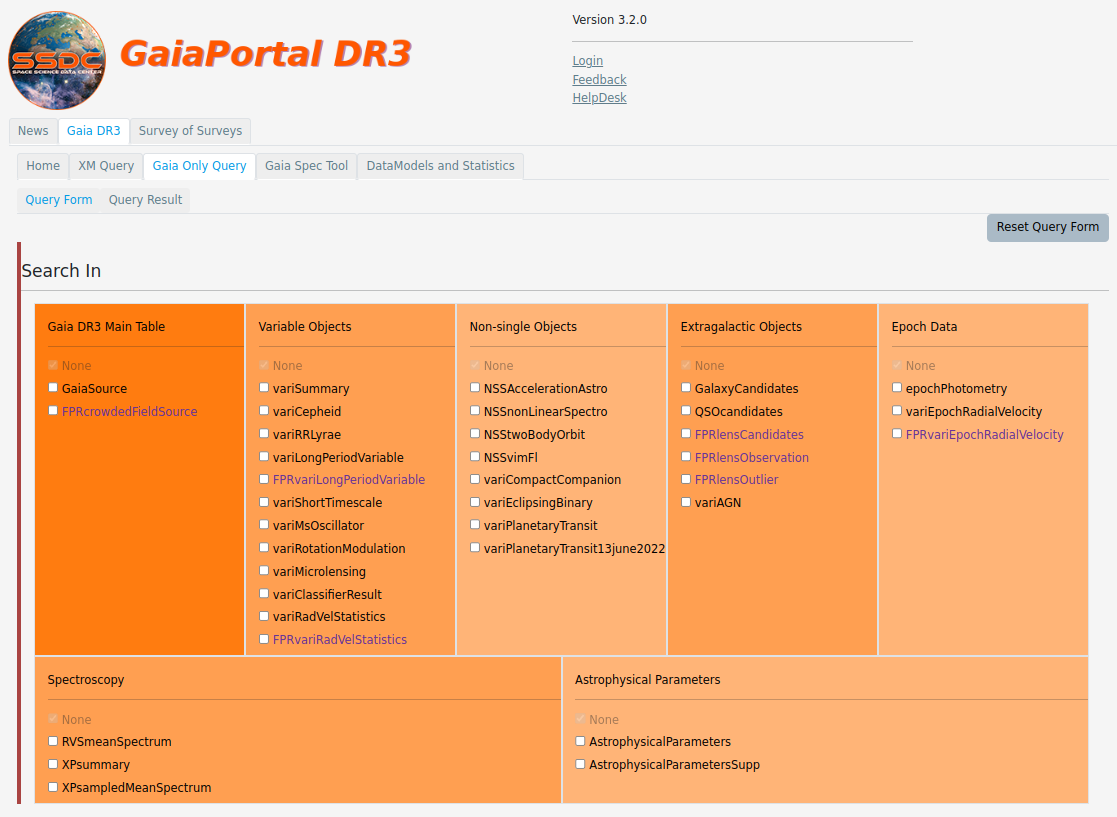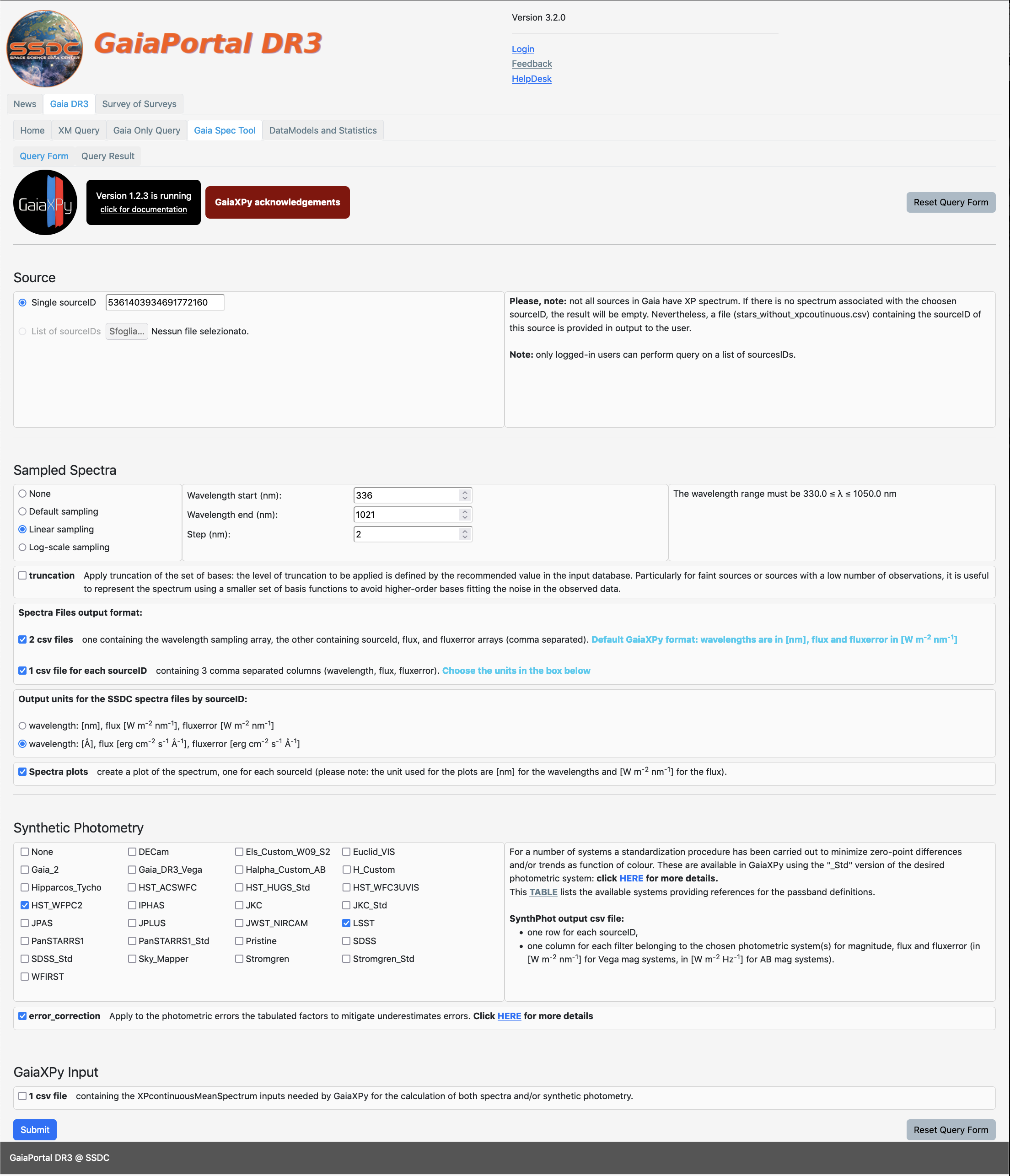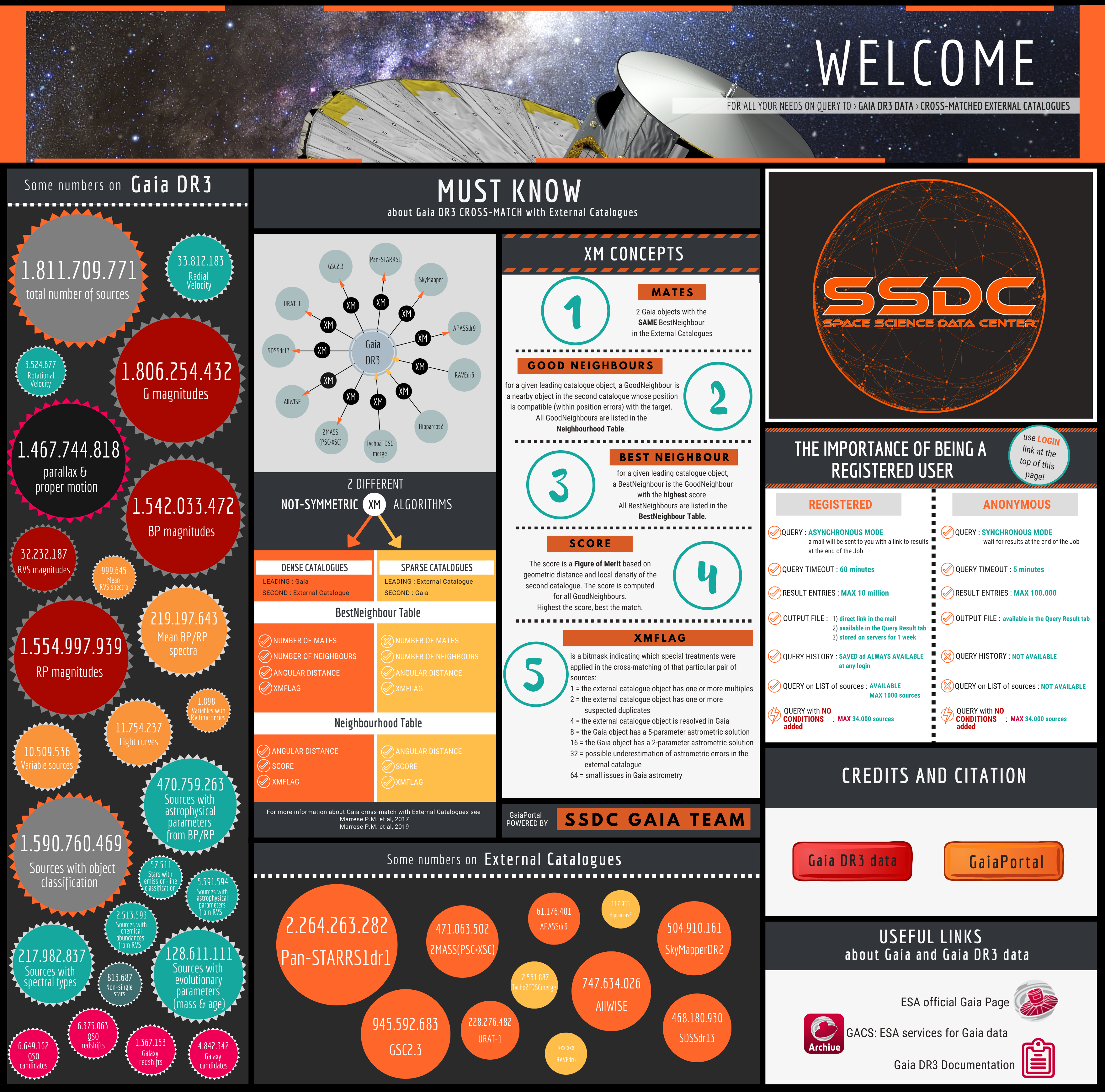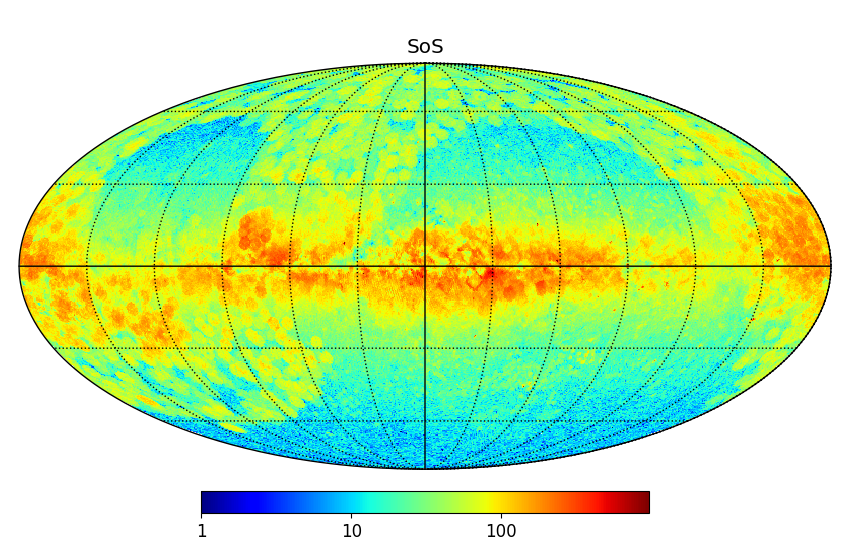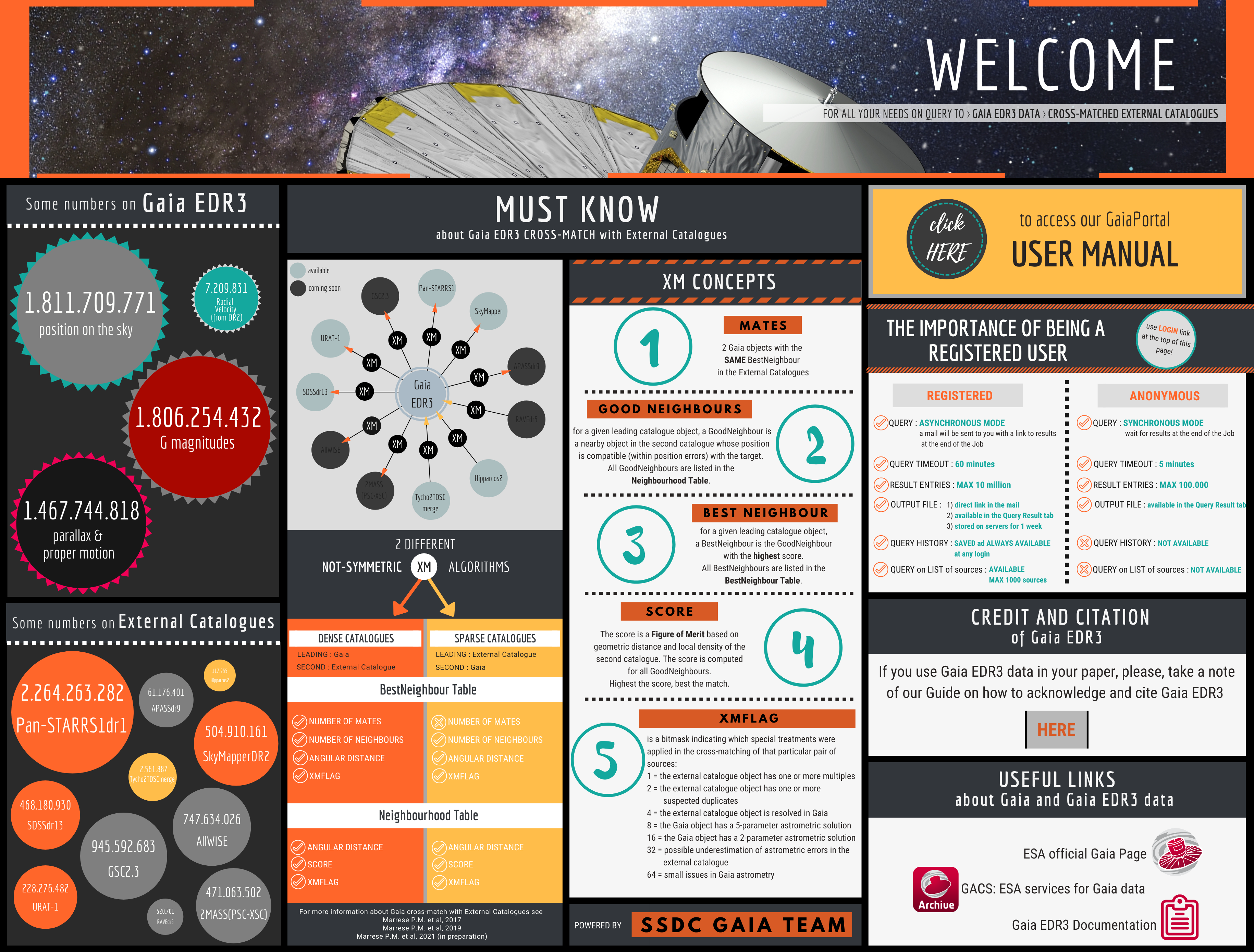GAIA News
| Oct 10, 2023 | Gaia Focused Product released on 10 October 2023! Waiting for Gaia DR4 release, expected not before the end of 2025, and just a few months from Gaia 10th launch anniversary (19 December 2023), the Gaia Data Processing and Analysis Consortium is releasing a juicy subset of new data focused on specific subjects. In particular, this release consists of 5 data products:
Diffuse Interstellar Bands data and Lens Catalogue Names can be downloaded as a single file through the "Gaia DR3 --> DataModel and Statistics" tab. Since Solar System Objects data are not included in our GaiaPortal, updated astrometry for Solar System objects can be accessed through the Gaia ESA Archive. Further information: For further information about Gaia FPR please refer to this page. Gaia FPR related papers are available here.
|
| Dec 13, 2022 | New GaiaSpecTool available on GaiaPortal@SSDC The new GaiaSPECtool tab is now online! Easy-to-use GaiaPortal combined with powerful GaiaXPy spectra handling! This new tool is based on the official Python package GaiaXPy, developed and maintained by members of the Gaia Data Processing and Analysis Consortium (DPAC) and in particular, Coordination Unit 5 (CU5), and the Data Processing Centre located at the Institute of Astronomy, Cambridge, UK (DPCI). GaiaSPECtool can be used on a single Gaia DR3 source or, for registered users only, on a list of sources to:
GaiaSPECtool can be accessed here, through the GaiaPortal DR3 main tab.
|
| Jun 13, 2022 | SSDC contribution to Gaia DR3 On June 13th the Gaia collaboration has released its Gaia Data Release 3 catalogue. Gaia DR3 data are based on data collected between 25 July 2014 and 28 May 2017, spanning a period of 34 months. As a comparison, Gaia DR2 was based on 22 months of data and Gaia DR1 was based on observations collected during the first 14 months of Gaia's routine operational phase. Gaia DR3 catalogue contains more than 1.8 billion stars with proper motion and parallax for 1.5 billion sources. Gaia DR3 catalogue also includes BP and RP spectra for 220 million stars, RVS spectra for 1 million stars and epoch photometry for more than 11 million stars. Gaia is also publishing the astrophysical parameters for more than 1.5 billion stars, radial velocity measurements for 34 million stars and variability measurements for more than 10.5 million sources. SSDC is one of the four ESA partner data centers for the publication and dissemination of Gaia data releases. SSDC has thus designed, developed, and made publicly available an access point to the Gaia and cross-matched external catalogues data: the GaiaPortal. SSDC is continuing to develop access, data extraction and multi-wavelength cross-match tools to enable the astronomical community to handle and fully exploit the scientific potential of this enormous archive. In addition, SSDC is responsible for the calculation of the official cross-match of the Gaia catalogue with the largest public available optical and near-IR catalogues ensuring an all-sky, panchromatic vision of the universe.
|
| Feb 01, 2022 | The SURVEY of SURVEYS available on GaiaPortal@SSDC A new astronomical database containing the recalibrated measurements from all main large spectroscopic surveys has just been released to the international scientific community and is available online on GaiaPortal. The Survey of Surveys represents the synthesis of spectroscopic measurements available in the large spectroscopic surveys for the Milky Way stars. The project is led by Italian scientists, with SSDC-ASI leading the cross-match phase, the database management and the data access, and INAF-Florence leading the scientific analysis of data (for further information see here). Astronomical surveys generally include several types of stars and are built collecting data with different instruments and telescopes located on both Earth hemispheres. In addition, the measurements obtained are analysed using different methods, and finally presented in several catalogues having their own format and content. Until now, there was no single and uniform reference catalogue for spectroscopic measurements. The SoS data release 1, the largest catalogue of radial velocity to date containing data for more than eleven million stars, was created through the cross-match and recalibration of all large surveys (GaiaDR2, APOGEE, RAVE, GALAH, GES, LAMOST) on a single reference scale. The first stellar parameter published in the SoS is the radial velocity, with an accuracy of about 300 m/s and a precision of about 0.5-2 km/s (a very good quality for such a large and composite catalogue). The future releases of the SoS catalogue will include further stellar parameters and detailed chemical information.
|
| Dec 03, 2020 | SSDC contribution to Gaia EDR3 On December 3th the Gaia collaboration has released its Gaia Early Data Release 3 catalogue. Gaia Data Release 3 is split in two parts: the early release called Gaia Early Data Release 3 (Gaia EDR3) and the full Gaia Data Release 3 (Gaia DR3), planned for the first half of 2022. Gaia DR3 data (both Gaia EDR3 and the full Gaia DR3) are based on data collected between 25 July 2014 and 28 May 2017, spanning a period of 34 months. As a comparison, Gaia DR2 was based on 22 months of data and Gaia DR1 was based on observations collected during the first 14 months of Gaia's routine operational phase. Gaia EDR3 catalogue contains more than 1.8 billions stars. SSDC is one of the four ESA partner data centers for the publication and dissemination of Gaia data releases. SSDC has thus designed, developed, and made publicly available an access point to the Gaia and cross-matched external catalogues data: the GaiaPortal. SSDC is continuing to develop access, data extraction and multi-wavelength cross-match tools to enable the astronomical community to handle and fully exploit the scientific potential of this enormous archive. In addition, SSDC is responsible for the calculation of the official cross-match of the Gaia catalogue with the largest public available optical and near-IR catalogues ensuring an all-sky, panchromatic vision of the universe.
|
| Jan 17, 2014 | Gaia's first star! After a successful second insertion manoeuvre, Gaia has arrived at its operational 180 day-long Lissajous orbit around L2, 1.5 million Km from Earth. Nice trip Gaia! Everything is going quite well. The picture (below) shows the first public Gaia data: an image of Sadalmelik, a yellow supergiant star in Aquarius. 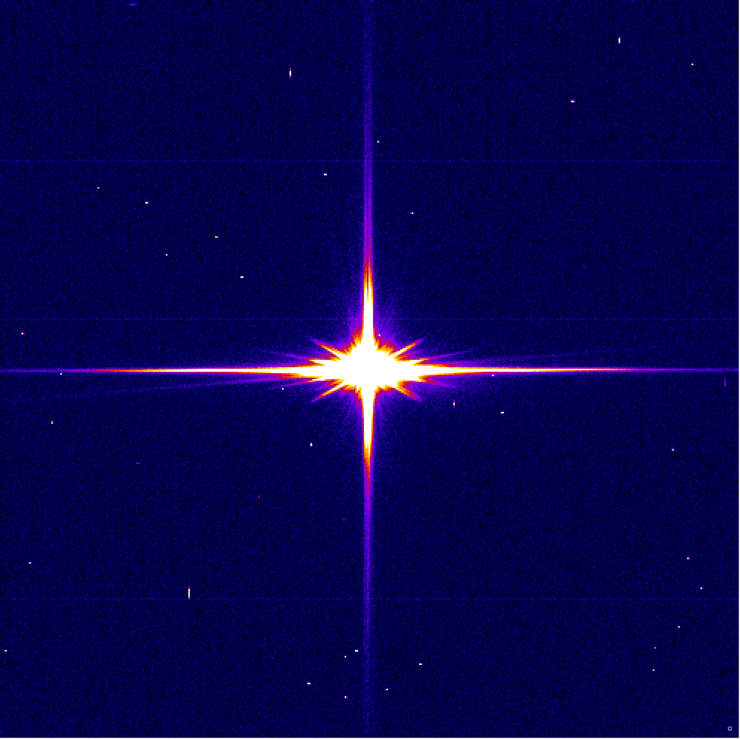 source: https://twitter.com/ESAGaia/status/423457053856636929/photo/1 The commissioning phase has begun: the next few days will be dedicated to calibration activities on the Basic Angle Monitoring and the Wavefront Sensor devices. Later on the Gaia telescopes will be aligned and focused. |
| Dec 19, 2013 | Gaia launched! On 19 December 2013 09:12 GMT (10:12 CET) Gaia lifted off on a Soyuz rocket from the ESA Spaceport in Kourou, French Guiana, and is now travelling to L2. Up there 1 billion stars (in the Galaxy and beyond) wait to be observed by the satellite and their brightness, positions, motion, distance and astrophysical characteristics to be measured, to produce the richest 3D map of the sky ever realized. We are eager to see the expected and, even more, the unexpected results that Gaia will produce. Gaia will provide the detailed 3D distributions and space motions of a billion stars, brighter than 20th magnitude. The astrometric precision, reaching a few millionths of an arcsecond, will be unprecedented. This will allow our Galaxy to be mapped, for the first time, in three dimensions. Ten million stars will be measured with a distance accuracy of better than 1 percent and a 150 million to better than 10 percent. Compared to Hipparcos, Gaia will improve parallax and proper-motion accuracy by almost 100 times and the number of stars observed by 10 000 times. In addition it will measure radial velocities and spectrophotometry for the sources. Gaia will survey a vast population of solar system bodies (major planets, natural satellites, comets, and asteroids, including several thousands of near-Earth objects) and extragalactic objects (half a million quasars and thousands of supernovae). In addressing all these fields, Gaia will cover a significant part of modern astrophysics. The Gaia catalogue will be one of the largest and richest astronomical catalogue ever realized. The ASDC (ASI Science Data Center) coordinates the Italian contribution to DPAC-CU9, the coordination unit responsible for the realization of the Catalogue and for the release of the Gaia data. In the framework of a wide international collaboration, ASDC will host a copy of the Gaia catalogue and will contribute to CU9 activities. ASDC is responsible in CU9 for the cross-match of the Gaia catalogue with the largest public available optical and near-IR catalogues, as well as several other catalogues from radio to gamma-ray, ensuring an all-sky, multi-wavelength and multi-color vision of the Galaxy. In addition, ASDC is developing access and data mining tools to enable the astronomical community to handle and fully exploit the scientific potential of this enormous archive. In addition, ASDC is building the archive and database which will host the Gaia ancillary data obtained by the Italian teams involved in the project. This archive will include the measurements, observations and simulations needed for the absolute calibration of the Gaia spectro-photometric data. The archive is helping the work of the calibration team and will then be public. Finally ASDC is involved in DPAC-CU5 (responsible for the spectro-photometric data analysis and reduction) activities, namely the realization of the crowded fields analysis software and the data reduction of the photometric data needed for the validation of the Gaia spectro-photometric standards. ASI press release : http://www.asi.it/it/news/al_via_la_missione_gaia INAF press release : http://www.media.inaf.it/2013/12/19/gaia-appuntamento-con-la-storia/ ESA press release : http://www.esa.int/Our_Activities/Space_Science/Gaia/Liftoff_for_ESA_s_billion-star_surveyor |

